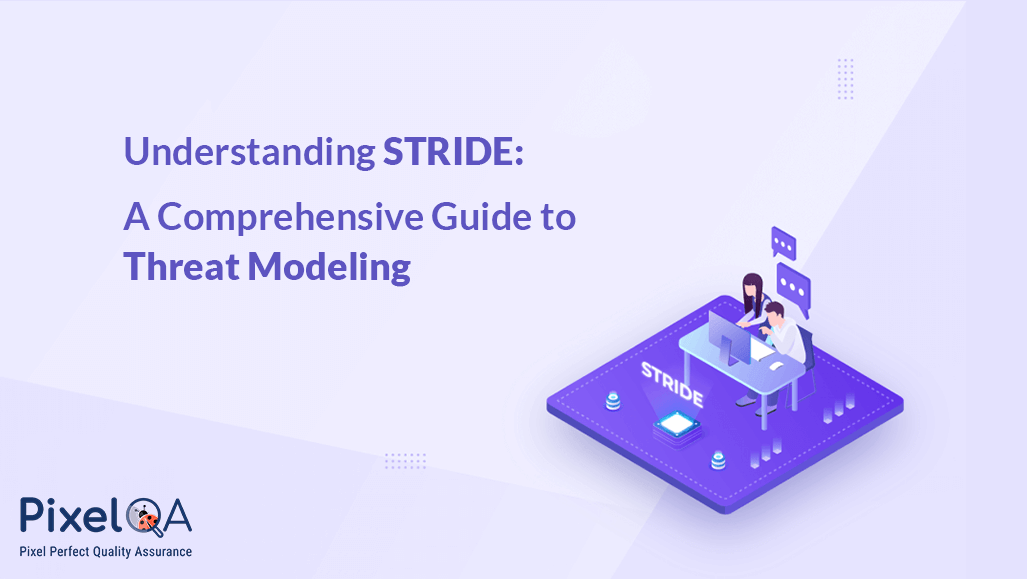
The modern cyber environment compels organizations into a perpetual game of cat and mouse with changing threats. As the attackers become increasingly sophisticated, companies require systematic means of defending their core systems. Threat modeling has become an effective tool in this battle - most notably the STRIDE framework, which enables teams to methodically find vulnerabilities before they can be exploited.
Among various threat modeling approaches, STRIDE delivers unique value by breaking down threats into clear categories. When combined with professional Security Testing Services, it creates a robust defense strategy. We'll explore how this framework works, its key benefits, and practical ways to implement it - giving your security team actionable intelligence to harden defenses effectively.
Table of Contents
- What is STRIDE
- Exploring Each of These Threat Categories in Depth
- Benefits of STRIDE Threat Modeling
- Implementing STRIDE Threat Modeling
- Conclusion
What is STRIDE
STRIDE represents six categories of threats to gadget or utility safety
- Spoofing Identity
- Tampering with Data
- Repudiation
- Information Disclosure
- Denial of Service (DoS)
- Elevation of Privilege
Exploring Each of These Threat Categories in Depth
Spoofing Identity
Spoofing identification is the act of pretending to be a legitimate person or device in order to access something without permission. This can be done by cracking passwords, phishing, or other techniques that make a system think an attacker is a legitimate user.
Tampering with Data
Data tampering attacks strike at the heart of information integrity. Malicious actors alter critical data - whether in transit between systems or stored in databases - to manipulate outcomes. We've seen everything from subtle invoice amount changes to complete transaction history falsification. These aren't just theoretical risks; last quarter, a client's financial reporting system was compromised through manipulated CSV uploads, leading to significant reconciliation issues.
Repudiation
Repudiation threats involve denying or disputing actions or events that have occurred, such as denying carrying out a specific action, like making a transaction, even when evidence proves otherwise.
Information Disclosure
Unauthorized access to sensitive information is information disclosure. This can occur through eavesdropping on communication channels or exploiting data storage vulnerabilities.
Denial of Service (DoS)
DoS attacks don't steal data - they make systems unusable. By flooding networks with bogus requests, attackers create artificial traffic jams that block legitimate users. The impact is immediate and visible: during a recent attack we mitigated, an e-commerce platform lost $250,000 in just four hours of downtime. Modern variants use sophisticated botnets that can generate traffic spikes exceeding 1 Tbps, overwhelming even robust infrastructure.
Elevation of Privilege
Elevation of privilege attacks entails intruders attaining unauthorized access to sensitive data or assets by acquiring higher access levels or permissions than are permitted by law.
Benefits of STRIDE Threat Modeling
Implementing STRIDE threat modeling offers several advantages for organizations seeking to enhance their security posture:
- Early Risk Identification: STRIDE facilitates the identification of capacity security threats at an early point of the improvement process, enabling proactive mitigation.
- Cost-Effective Security: Companies can better manage resources by detecting threats early, minimizing the expense of dealing with security problems later in development.
- Improved Communication: STRIDE facilitates smooth communication between development, testing, and security teams.
- Tailored Solutions: Organizations can strengthen their security features according to the unique needs of their programs and systems using threat modeling.
Implementing STRIDE Threat Modeling
Here's a simplified guide to implementing STRIDE threat modeling in your organization:
- Identify the System: Begin by way of defining the scope of your chance modeling workout. Become aware of the system or software you need to investigate.
- Create a Data Flow Diagram (DFD): Develop a data flow diagram to show how information moves through the system. This will help identify entry and exit points as well as data repositories.
- Apply STRIDE: When analyzing each component in your DFD, use STRIDE to identify potential threats to different parts of the system.
- Assess Risks: Assess every hazard and determine the likelihood and impact of associated risks.
- Prioritize Mitigation: Prioritize mitigation efforts based on the severity of identified threats. Address the most important risks first.
- Implement Security Controls: Put security controls in place to reduce identified threats, including code reviews, access controls, and encryption.
- Review and Iterate: Regularly review and revise your threat assessment as your device changes to reflect new threats and shifting risks over time.
Conclusion
Organizations face consistent security threats in today's virtual age. In order to recognize and negate possible security threats appropriately, STRIDE threat modeling offers a methodology. Recognizing the six categories of risks - Spoofing identity, tampering with data, Reputation, data Disclosure, Denial of service, and Elevation of Privilege - helps organizations make their security stronger, secure their assets, and ensure trust from their customers. It is essential to hire a software testing company and implement a stride threat model. Implementing STRIDE risk modeling is a proactive measure toward ensuring the safety and integrity of your systems and applications.
About Author
Started his journey as a software tester in 2020, Rahul Patel has progressed to the position of Associate QA Team Lead" at PixelQA.
He intends to take on more responsibilities and leadership roles and wants to stay at the forefront by adapting to the latest QA and testing practices.

